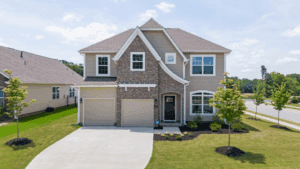Some shifting demographics affect the real estate market in Ontario. The population is getting older and requires a different design type in their houses. Recent spikes in immigration add to the demand for more housing. Millennials seek other features, including sustainable and Smart Home technology choices. How do the changing demographics impact the real estate market?
Demographic Trends Shaping the Market
Although many trends shape the real estate and mortgage market, some are more prevalent. Each of these has a different effect on the overall trends in the real estate market.
The Population is Getting Older
Canada’s population is continuing to age, according to the Housing Market Insight report from the Canadian Mortgage Housing Corporation (CMHC). As people age, they choose to move into condominiums, downsize their living spaces, and even rent homes.
Single-floor designs and homes with features that make them more accessible are also trending up with an older population. According to the same research, older people are most likely to move into condominiums in Toronto and Vancouver.
Research also shows that younger senior citizens are staying in their existing houses. Moreover, seniors seek single-floor living spaces and other amenities like no-step entries. These trends and others point to a shifting demographic in which older people stay in their homes longer and seek living assistance.
There’s an Increase in Immigration
The increase in Canada’s immigration has also had a significant effect on shaping the real estate market. According to news reports (CTV, Nov 7, 2023), Canada’s population surpassed 40 million on June 16th, 2023.
That leads to a demand for new housing, which can, in turn, drive up asking prices and even rents in areas like Toronto.
The Growth of Remote Work
People who work remotely are looking for homes with additional rooms to convert into offices. According to Canadian Real Estate Wealth magazine, the country generally ranks third worldwide with the highest number of remote job postings. Higher living costs in urban areas are not always justified. People also seek properties that offer a conducive environment, amenities, and comfort.
Some other trends also need to be considered. Two of the biggest groups in Canada that are affected by these trends are the Millennials and the aging population.
The Effect of Aging Populations and Millennial Buyers
There are some slight differences between what the aging population and the Millennials look for in a house. For example,
Older people are looking for accessibility features like wider doorways. The Rick Hanson Foundation reports that by 2035, one in four Canadians will be over 65. That’s just one of the accessibility features they’re looking for, including lower countertops and more accessible bathroom fixtures.
There’s also evidence that the aging population is looking to secure themselves financially through real estate Investments. Small business owners looking to sell their businesses have often invested in real estate as a hedge fund in retirement.
Millennials are looking for both affordable and sustainable houses. This generation favours remote work, so they look for locations that are only sometimes in urban centers. They also focus on finding modern amenities and Smart Home features. These include:
- Gym equipment for remote workers includes bikes for indoor cycling and a space set aside for other equipment, like a rowing machine.
- The Smart Homes that Millennials are looking for are also secure. They offer technology that activates before anyone steps through the front door. Outdoor security cameras are at the top of the list, and most of this generation’s Smart Homes have high-resolution weather-resistant units.
Adapting Real Estate Strategies to Demographic Shifts
Considering the current trends, there have been a few critical shifts in real estate strategies.
Real estate developers are focusing on houses geared towards an aging population. These types of senior living communities offer a wide variety of activities, support the idea of aging in place, and are close to important amenities like parks, shopping centers, and medical facilities.
There’s also a need for environmentally friendly building materials to satisfy Millennials’ desire for eco-friendly, sustainable homes. Adobe brick is one of these materials. It is made of strong clay, and the insulation factors help to keep a building’s temperatures consistent.
Real estate developers and strategists are designing homes with dedicated office space to satisfy Millennials who often work remotely. This can mean buyers looking for a clean, bright space with natural light.
These trends are picking up momentum, and it’s interesting to note some predictions for the future.
Predictions for Future Market Changes Based on Demographics
Research points to the fact that different areas of the province are undergoing either price declines or modest gains.
Based on some of the demographics listed above, bigger cities like Toronto had an average home price that remained the same year over year at $1072,528. The prediction is that the market will appreciate slowly, fueled by a supply of listings and steady demand.
Are You Looking for a Private Lender Mortgage Option?
Mortgage Broker Store focuses on numerous mortgage-related products. One of our priorities is mortgages that don’t meet traditional lending institution requirements. Our team includes private lenders, brokers, and authorized mortgage agents. Let us help you prepare for and get a product that meets your requirements.
Email ron@mortgagebrokerstore.com or call 416-499-2122.



